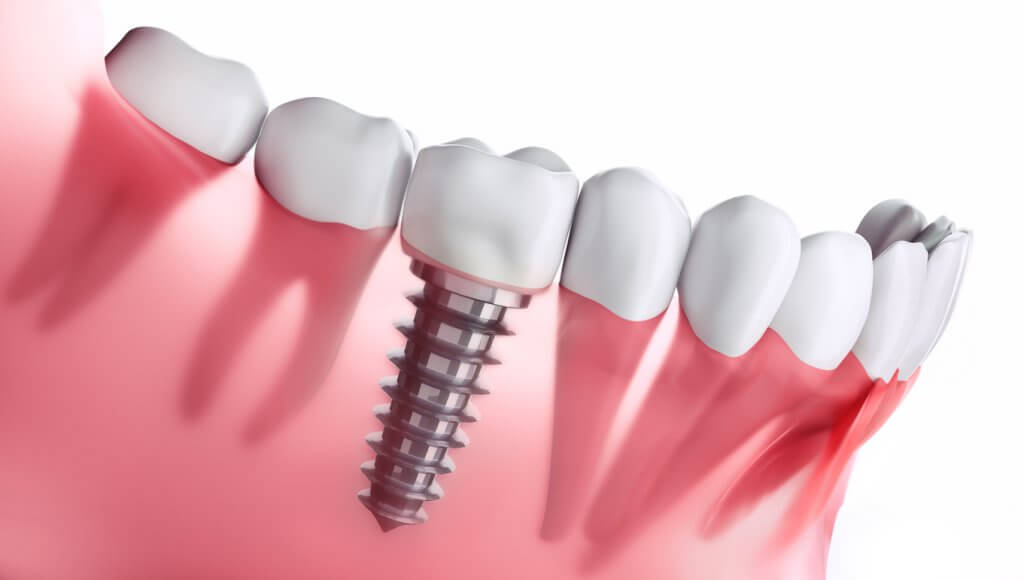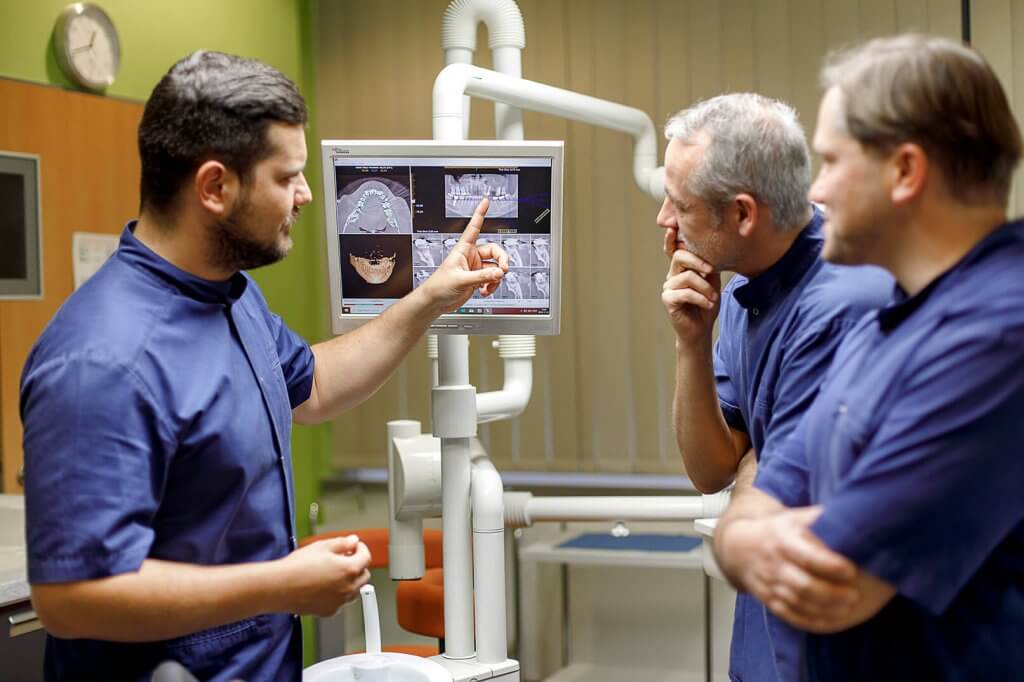You have probably already heard about dental implants, if you are looking for a quick and reliable solution for tooth replacement. If that’s the case, you must have several questions about it. In these articles, we will discuss everything you need to know about dental implants.
Tooth loss is not only an aesthetic issue, but also the starting point for a number of more serious problems. As every other dental treatment, the solutions for tooth replacement are evolving as well. At the moment, the most reliable and longest lasting solution for replacing a missing tooth is to have dental implants. The idea here is to replace the root as well, not just the visible part of the tooth. “The material of dental implants is a special titanium alloy. They are inserted into the jawbone during a surgical intervention. Implants have a very special surface, which allows them to integrate with the jawbone. This happens without the use of additional connective tissues.” says Dr. Máté Kelemen, implantologist and dental surgeon.
Disbeliefs about dental implants
The most common misconception about dental implants is that they are replacing an entire tooth. In reality, they are just the artificial roots. In order to work as a full replacement, a crown and an abutment has to be fitted on them. Therefore, the implant itself is not visible, yet it is irreplaceable. It is as sturdy as a natural tooth.
Another common misconception is that each missing tooth needs to be replaced by a single implant. However, dental implants can provide an alternative solution in many cases, even when it comes to replacing every teeth on a jawbone. There are implant retained dentures, supported by 4 implants, and even fix solutions which requires 6-8 implants. Using implants does not damage healthy teeth, as there is no connection between them.
All you need is bone
The implant has to be covered in bone, in order to fulfill it’s purpose. The longer we postpone tooth replacement, the harder it will be to insert dental implants in the area. “In order to determine how much bone is available in the area, the first step is always a 3D CT scan. Based on this, we can carefully plan the entire treatment for the patient.” Besides quantity, we also need to examine the quality of the bone. If the bone is soft, the implant won’t have enough stability. This usually happens when the patient has Osteoporosis, or takes certain medication. This is why filling out a health questionnaire is of utmost importance.
Modern dentistry offers a solution even for patients who don’t have enough bone to receive dental implants. Bone substitution treatments are specifically for such cases. The most common types of bone substitution are sinus lift, contour augmentation, and guided bone regeneration. Whenever it’s possible, our experts are aiming to use a mixture of artificial bone substitution and the patient’s own bone. This mixture goes on the designated area, then we use a special membrane, which serves as an additional layer of protection. The healing normally takes up to 6-8 months after the procedure. During this period, the body fully regenerates the bone tissues in the area. In many cases this is the first step towards dental implants.

